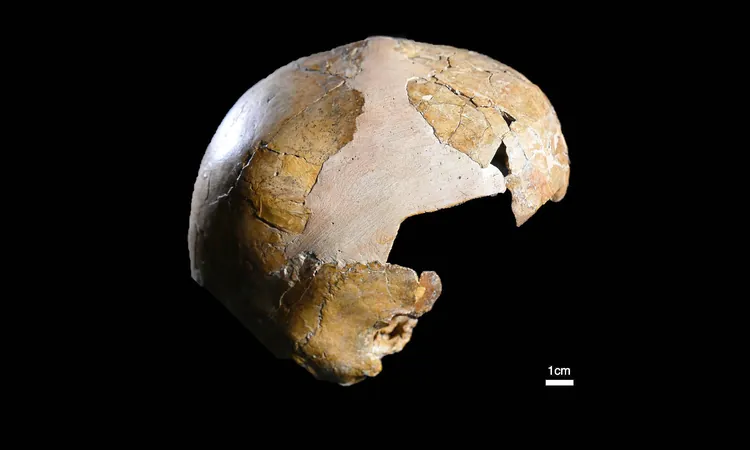
Ancient Skeleton Reveals Shocking Hybridization Between Humans and Neanderthals!
2025-08-30
Author: Jia
In a groundbreaking revelation, the skeleton of a child discovered nearly a century ago in Skhul Cave on Mount Carmel, Israel, has been reassessed, shedding new light on our ancient history.
This analysis reveals a striking mix of traits from both Homo sapiens and Neanderthals, suggesting this child may represent one of the earliest known examples of interbreeding between the two species, dating back around 140,000 years!
A Window into Ancient Interactions
The findings, led by Professor Israel Hershkovitz from Tel Aviv University and Anne Dambricourt-Malassé from the French National Centre for Scientific Research, highlight the importance of the Skhul I specimen in understanding early human population interactions in the Levant.
The study noted that while the braincase shows a modern human-like curved vault, the jaw displays distinctive Neanderthal features, such as a lack of a chin and unusual dental patterns. This combination challenges long-held beliefs about the clear anatomical distinctions between our species and Neanderthals.
A Deeper Look—The Science Behind the Discovery
Using cutting-edge micro-CT imaging, the research team reconstructed detailed 3D models of the skull and jaw, even correcting previous misalignments created by preservation efforts. Remarkably, characteristics of the inner ear also pointed to ancestral ties with Neanderthals.
Professor Hershkovitz stated, “Genetic studies show that these groups exchanged genes, indicating a more complex web of human ancestry.” Indeed, many people today carry traces of Neanderthal DNA, highlighting ongoing gene flow between these two populations.
Why Skhul I Is a Game-Changer
The implications of the Skhul child’s hybrid nature expand our understanding of early social behaviors, including ritual burials that suggest an advanced cognitive capacity for emotion and culture. If Skhul I is not exclusively Homo sapiens, it significantly alters our perception of one of the earliest formal burials.
This discovery ties into a broader narrative of the Levant as a critical crossroads for human evolution, where various groups blended and interacted, reminiscent of the later findings like the Lagar Velho child, which exhibited a similar mixture of traits.
Skepticism and the Search for Answers
However, the path to confirming the hybrid assertion is fraught with challenges. What remains contested among experts is whether skeletal features alone are sufficient evidence of hybrid ancestry. Paleoanthropologist Chris Stringer voiced concerns, suggesting that while signs of gene flow exist, the skeleton still aligns primarily with Homo sapiens.
The conclusive proof may rest in ancient DNA, which has proven elusive due to the warm climate of the region. The petrous portion of the temporal bone remains a hopeful candidate for providing clearer insights into the genetic makeup of the Skhul child.
The Future of Research: A New Era Awaits
This revelation opens new avenues for future research, perhaps leading to more genome data from ancient remains or further comparative analysis of Levantine fossils. As we piece together the puzzle of human evolution, the Skhul child reminds us of the rich tapestry of our ancient ancestry—one that is still unfolding.
As we continue to explore the implications of these findings, one thing is clear: our understanding of what it means to be human is as complex and layered as the very bones that make us.


 Brasil (PT)
Brasil (PT)
 Canada (EN)
Canada (EN)
 Chile (ES)
Chile (ES)
 Česko (CS)
Česko (CS)
 대한민국 (KO)
대한민국 (KO)
 España (ES)
España (ES)
 France (FR)
France (FR)
 Hong Kong (EN)
Hong Kong (EN)
 Italia (IT)
Italia (IT)
 日本 (JA)
日本 (JA)
 Magyarország (HU)
Magyarország (HU)
 Norge (NO)
Norge (NO)
 Polska (PL)
Polska (PL)
 Schweiz (DE)
Schweiz (DE)
 Singapore (EN)
Singapore (EN)
 Sverige (SV)
Sverige (SV)
 Suomi (FI)
Suomi (FI)
 Türkiye (TR)
Türkiye (TR)
 الإمارات العربية المتحدة (AR)
الإمارات العربية المتحدة (AR)